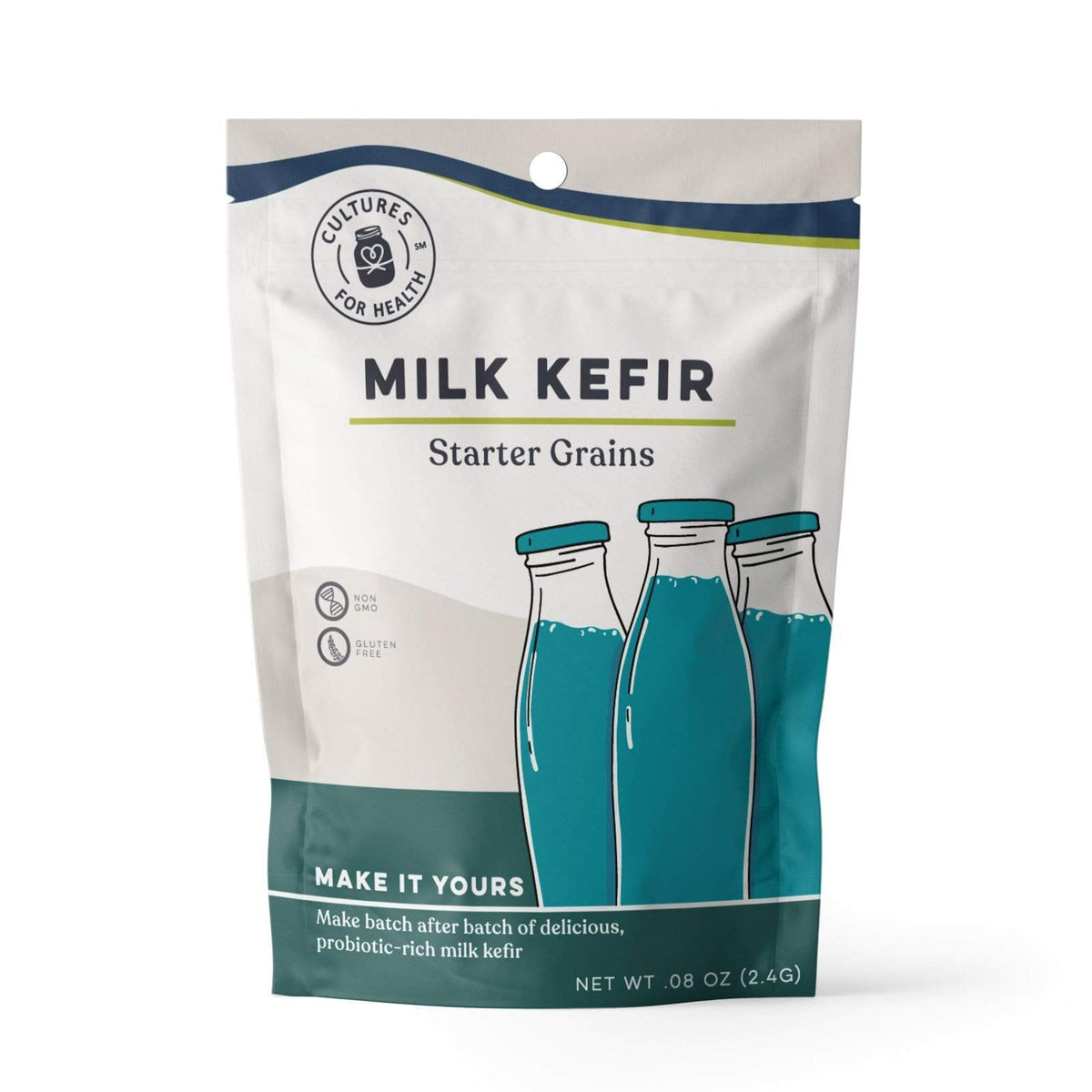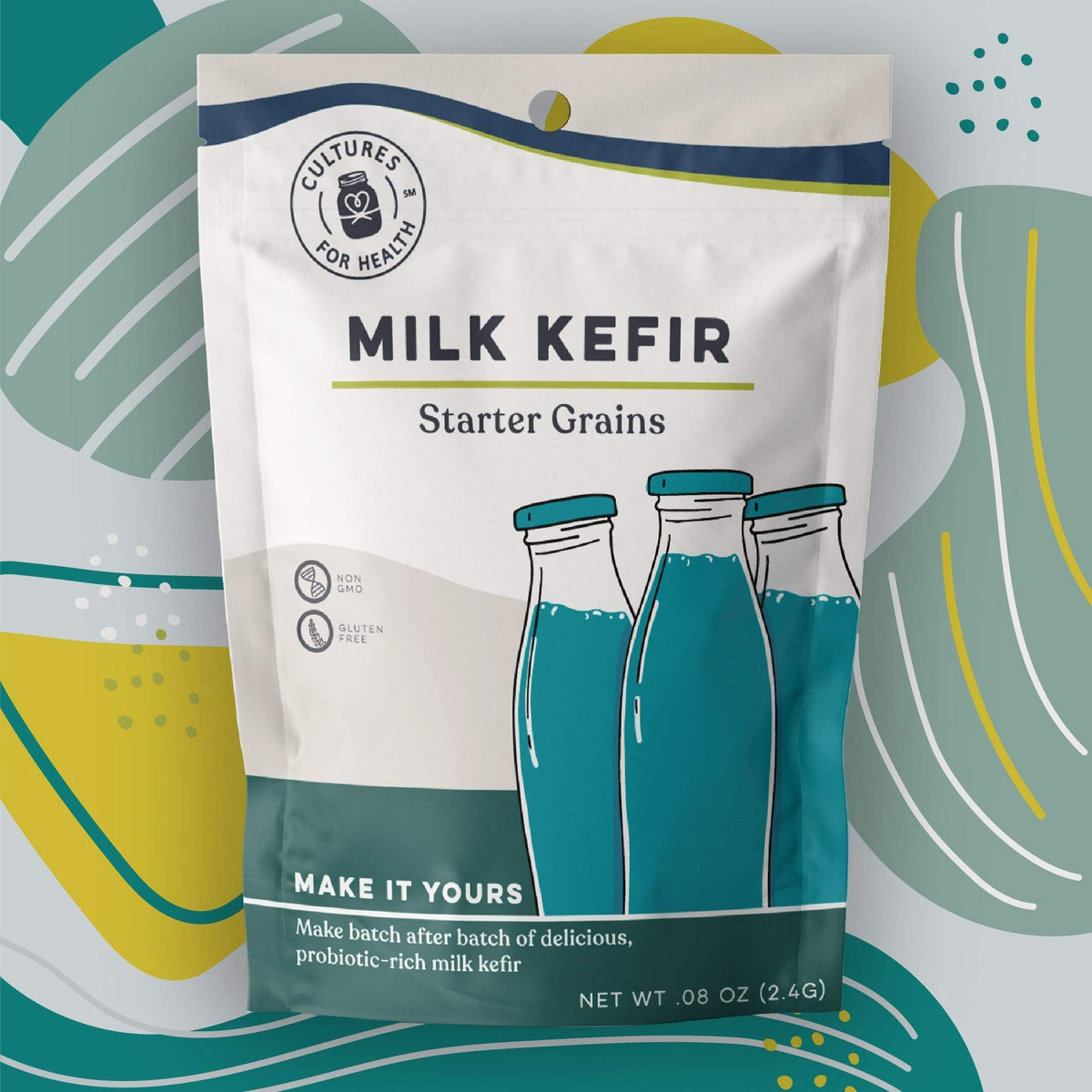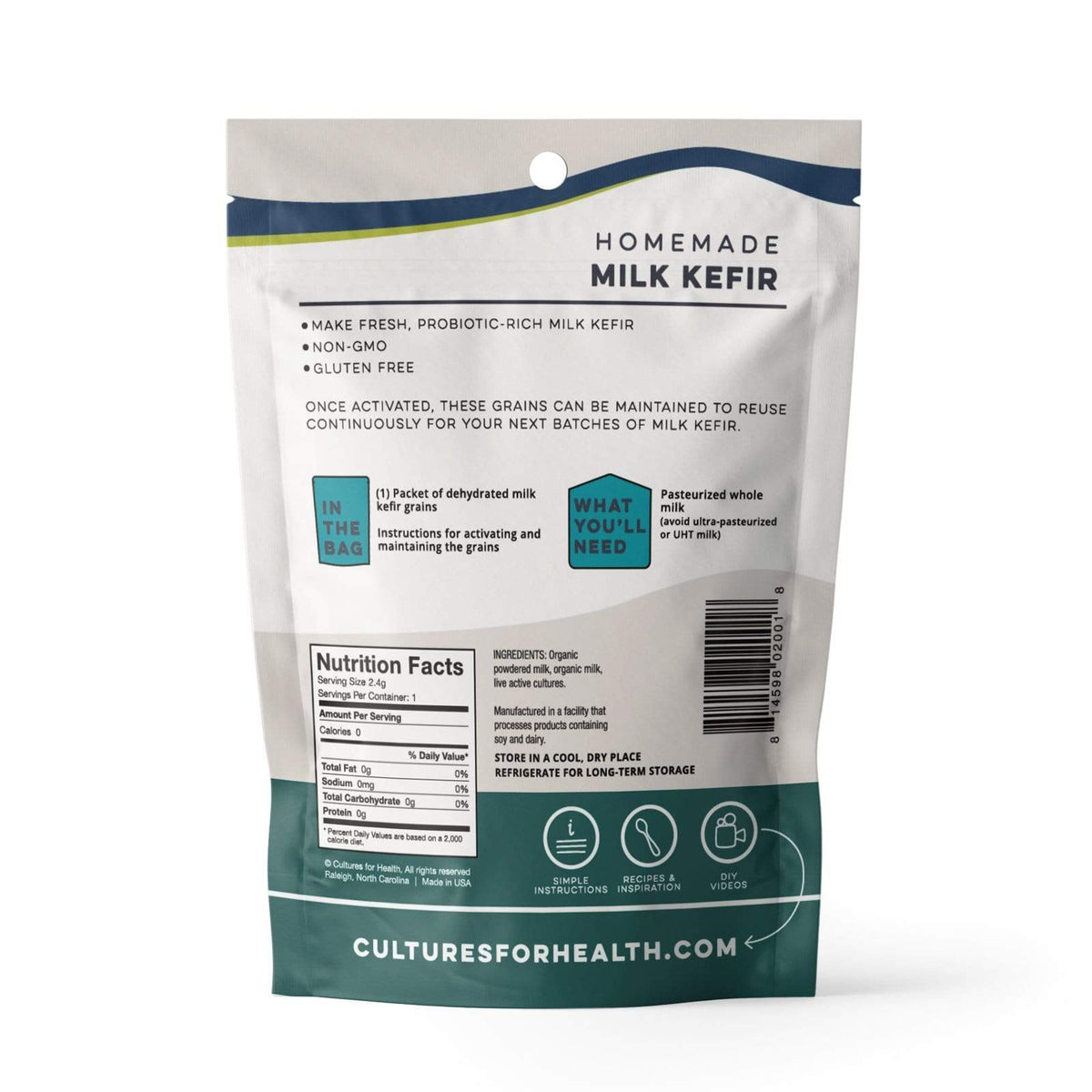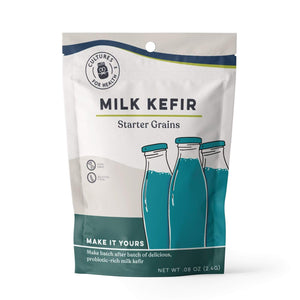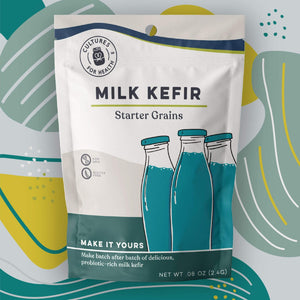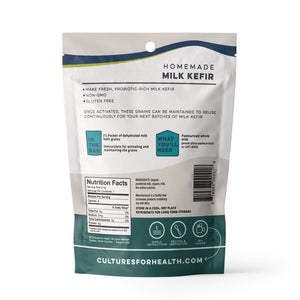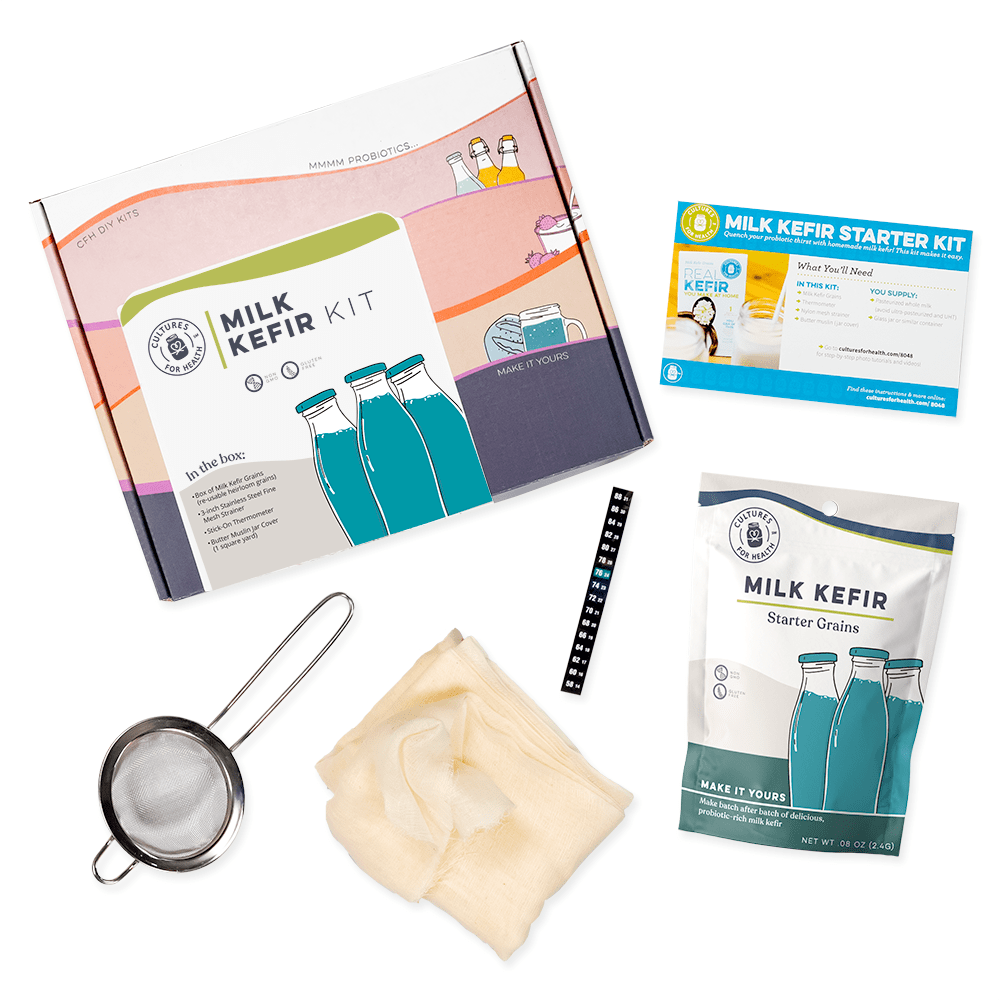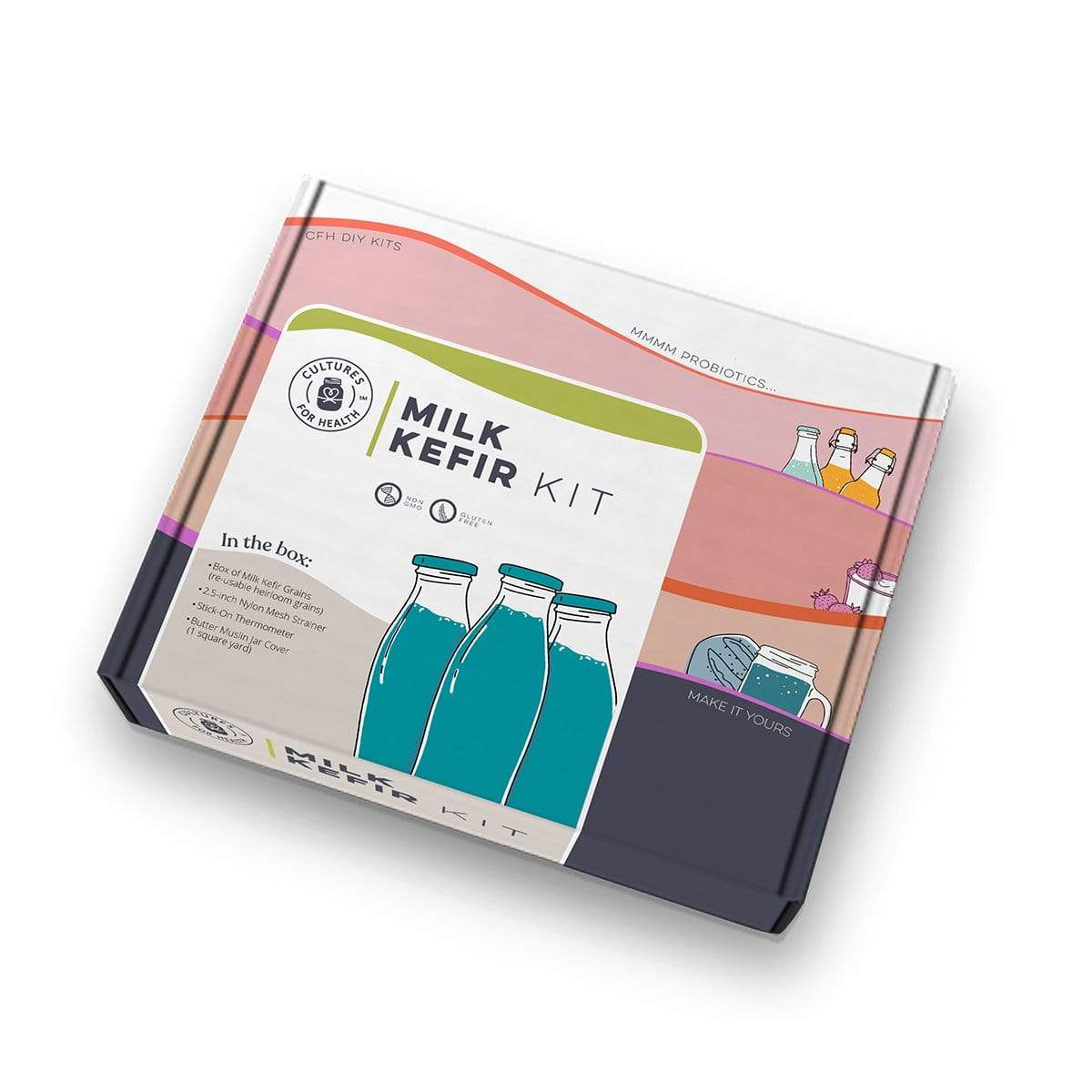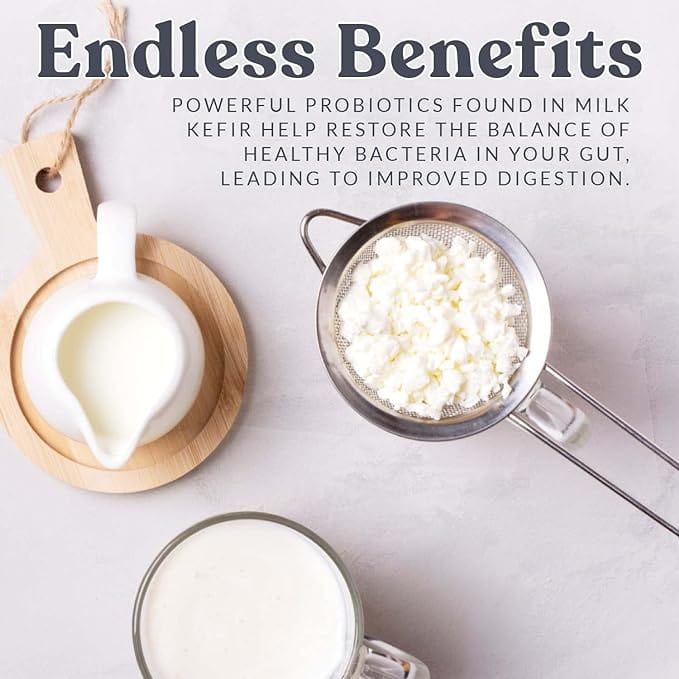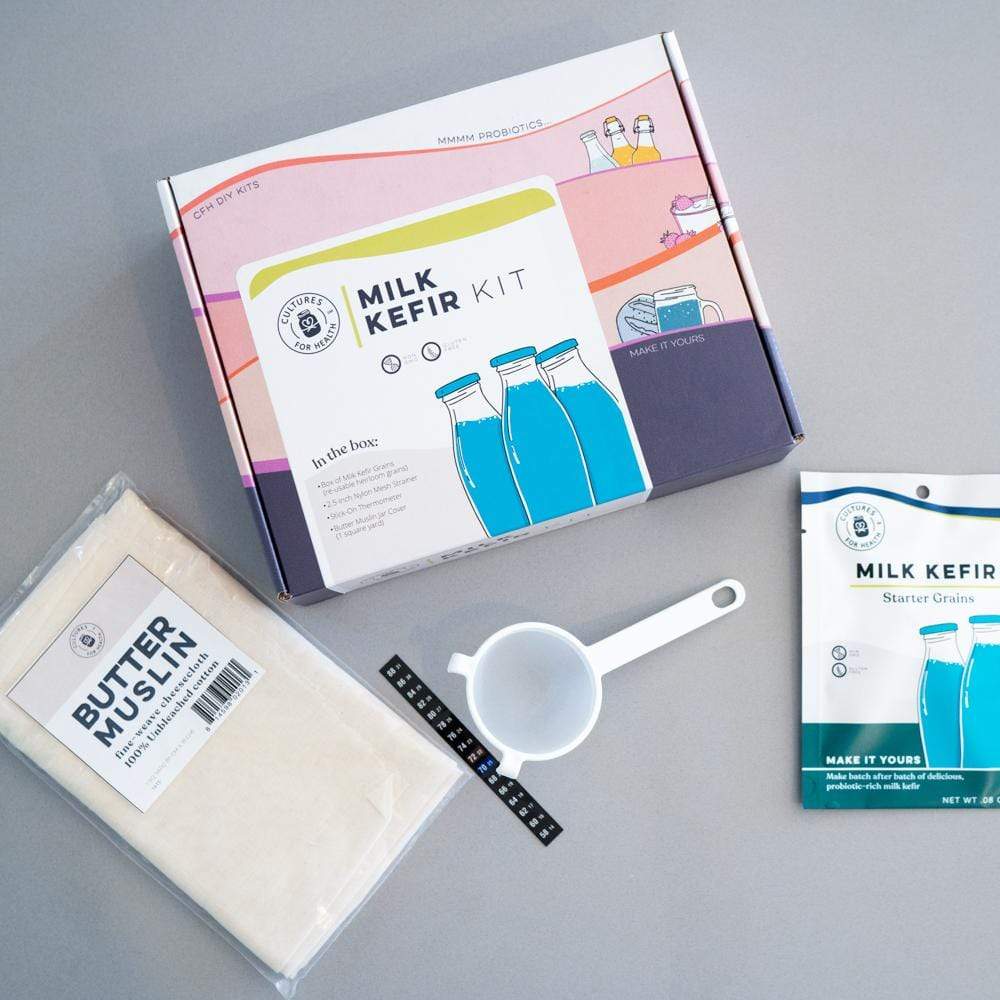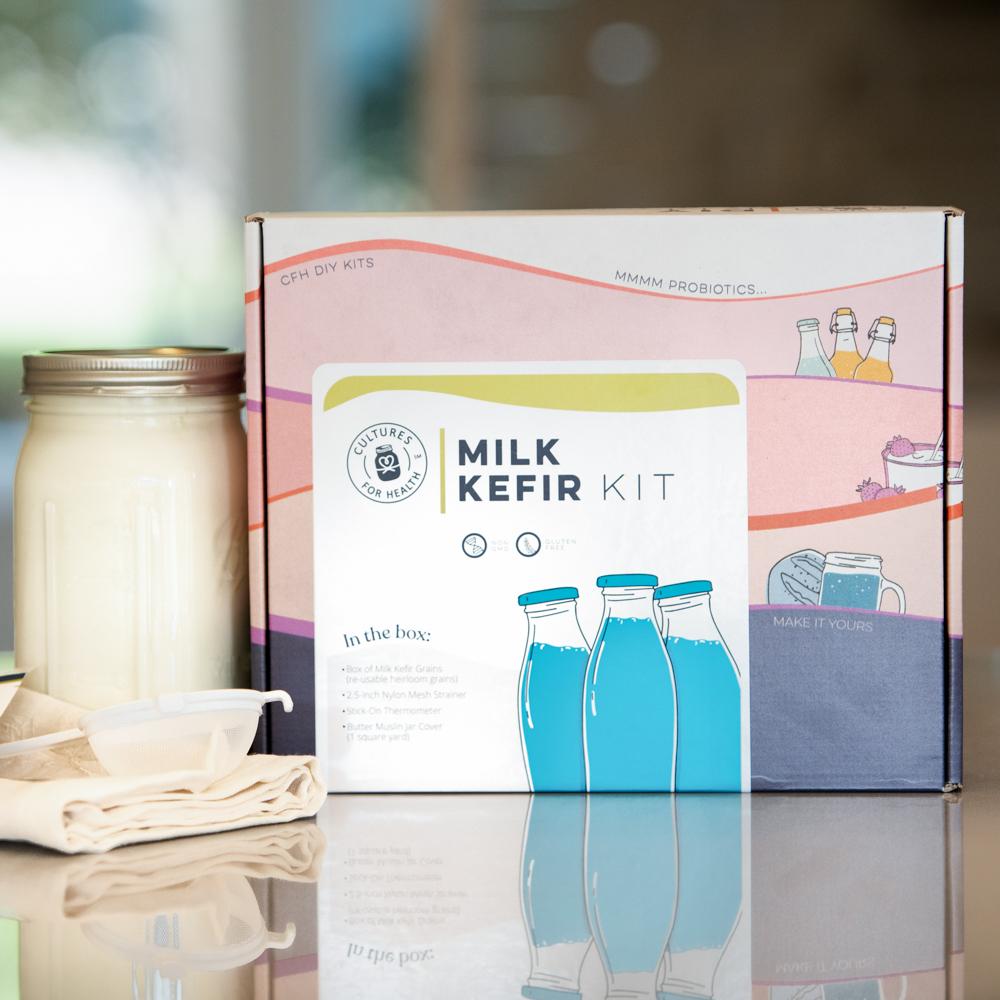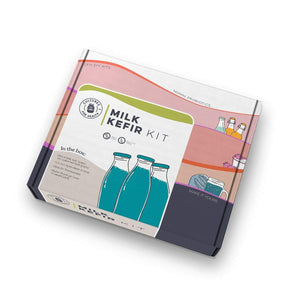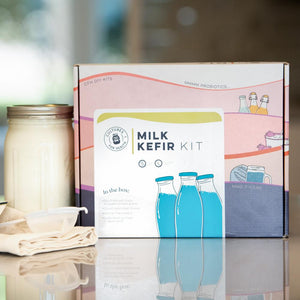
Kefir grains are the living symbiotic colonies of yeast and bacteria that convert milk in to the probiotic powerhouse that is milk kefir. As the kefir grains digest the lactose in the milk, they create that tangy, creamy taste and texture that makes milk kefir what it is.
However, since kefir grains are living colonies, they're delicate, making where to buy kefir grains a real issue. Any store is going to have a hard time storing living milk kefir grains, so finding kefir grains near you can be hard.
For a short answer, buying milk kefir grains from a reputable online dealer is often the fastest and safest way to get kefir grains. Milk kefir is made from one of two kefir culture methods – a mother culture called “Milk Kefir Grains” or a powdered culture starter designed specifically for making kefir. The latter contains a proprietary blend of various bacteria strains, the former is a bit more complex. We grow the milk kefir grains ourself in our onsite facility using high quality organic milk and regular testing to ensure safety and a quality product.
Milk Kefir Grains
Jump to a Section:
- What Are Milk Kefir Grains?
- Making Kefir Grains from Scratch
- Making Kefir Without Grains
- How to Get Kefir Grains & Cultures
THE BASICS OF MILK KEFIR GRAINS: WHAT ARE THEY AND WHERE DO THEY COME FROM?

Milk kefir grains are a mother culture whose main physical structure is made up of polysaccharides, the primary of which is kefiran. Within this matrix of polysaccharides exists both bacteria and yeasts which exist in symbiosis both with each other. These bacteria and yeast feed on the milk and thereby culture it. These grains have a gelatinous feel to them and look like a sort of miniature floret shape, much like cauliflower.
The bacteria and yeast composition of milk kefir grains tend to vary according to their origin as well as their culturing environment. In other words, where the grains came from and where they are currently being used can impact the makeup of the microorganisms existing in the milk kefir grains.
LEARN MORE: Composition of Milk Kefir Grains
CAN YOU CULTIVATE KEFIR GRAINS FROM SCRATCH?
This is a common question and one worth delving into. Most sources agree that the milk kefir grain culture was harnessed somewhere near the Caucasus Mountains. The grains themselves are quite unusual in that no other cultured dairy product is known to come from grains.
Though the specifics of the origination of milk kefir grains are fairly shrouded in mystery, one thing has been made clear: milk kefir grains must be acquired from somewhere. The specific polysaccharides, bacteria, and yeasts that makeup milk kefir grains have been handed down from generation to generation. You can, however, multiply your milk kefir grains once you have them in order to pass the culture on.
CAN YOU PREPARE MILK KEFIR WITHOUT KEFIR GRAINS?

Depending on your definition of milk kefir, you can! Milk kefir grains are a very specific culture with a very specific combination of microorganisms. Milk kefir containing all of the bacteria, yeasts, and the polysaccharide kefiran cannot be made without milk kefir grains. If you already have milk kefir grains, you can get them to multiply in the right conditions.
Milk kefir can, however, be made from a kefir starter culture, which is a powered mixture that mimics those cultures in the milk kefir grains. These powdered starter cultures make a cultured dairy product similar in flavor and viscosity to milk kefir made from grains, but it does not contain the exact properties of kefir made from grains, and they won't continue to propagate indefinitely, like milk kefir grains do.
HOW AND WHERE TO ACQUIRE KEFIR GRAINS & CULTURES
1. Decide Which Kefir Culture is Right for You
Choosing the milk kefir culture that is right for you should be based on your own personal needs. The two kefir cultures – milk kefir grains vs. direct-set culture – can be chosen based on what you want in your cultured kefir, how much kefir you’d like to make, and how long of a time frame you’d like to keep making kefir.
- If your preference is for a simple cultured dairy product containing some of the bacteria present in traditional milk kefir, a kefir starter culture might be right for you. If, on the other hand, you prefer to make milk kefir for the specific strains of bacteria and yeasts as well as the much-touted polysaccharide kefiran, then acquiring milk kefir grains is a better option.
- If you’d like to make milk kefir only occasionally, then choosing a kefir culture starter may be the better option. Alternatively, if you’d like to make a fresh batch of milk kefir every day or two, then choosing milk kefir grains may be a better option for you.
- Finally, if you are only looking to make milk kefir for a brief period, then a kefir culture starter may be the most convenient option. Conversely, if you are wanting a culture starter that can be used time and time again, then milk kefir grains are a more practical option.
GET A CULTURE: Kefir Starter Culture | Milk Kefir Grains

2. Where to Purchase Kefir Grains: Finding Kefir Near Me
Milk kefir grains start in a fresh state, but they aren't very stable in that state. They require specific temperatures and feedings that are difficult to maintain while transporting or shipping the grains. As a result, you'll often find kefir grains sold in a dehydrated state.
Dehydrated kefir grains are in a dormant state and, while care should be taken with them, they are not in as fragile of a state as the fresh grains are. Dehydration does create minor stress on all cultures, but with proper activation, they should be up and running in no time.
Milk Kefir Starter Kit
Dehydrated kefir grains also have the advantage of having a longer shelf life. This is advantageous in that it gives you a buffer of time both in the shipping of the grains and in the time frame you have once you receive them. So if it takes a 3 or 4 days to ship your kefir grains, then you don't have time to start them for another week, this would kill live grains, but your dehydrated kefir grains will be fine.
You can obtain fresh kefir grains by getting them from a friend who is already making kefir at home, assuming that you trust that they've kept their grains healthy. Fresh grains can also be purchased online from retailers, but must be shipped swiftly under the right weather conditions and placed immediately in fresh milk upon arrival or or else the cultures can die from temperature variation or lack of food.
Want to know more about kefir grains? Download our Milk Kefir Guide and Recipe Book today!
WHAT'S NEXT FOR BUYING KEFIR GRAINS?
Whether you decide to make kefir with a starter culture or kefir grains, we're excited you're considering adding this wonderful fermented food to your routine!
Cultures for Health is here to support you in all of your milk kefir endeavors with our amazing line-up of products.
We've got everything you need all packed into one with our Milk Kefir Starter Kit. This comes packed with everything you need including tools and milk kefir grains making starting to make your own milk kefir at home as easy as possible.
If you're a little bit more advanced, we have the best milk kefir grains for you to get started with right now!
Check out our collection of Milk Kefir products and then grab a Milk Kefir Starter Kit when you're ready to get started! You can do this!
Click here to download our full milk kefir recipe book to get more idea about kefir grains, filled with tips, tricks and recipes to make amazing milk kefir at home.
At Cultures for Health, our milk kefir grains are versatile and can be used with various milk types such as cow's milk, goat's milk, or non-dairy milks like almond and soy. Remember, using different types of milk can change the texture and taste of your kefir, so feel free to experiment to find what you like best.
Happy Culturing!
Sources:
Prado, M. R., Blandón, L. M., Vandenberghe, L. P. S., Rodrigues, C., Castro, G. R., Thomaz-Soccol, V., & Soccol, C. R. (2015). Milk kefir: composition, microbial cultures, biological activities, and related products. Frontiers in Microbiology, 6, 1177. http://doi.org/10.3389/fmicb.2015.01177
Ready to Learn More?












